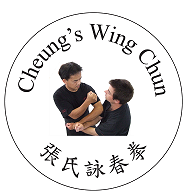www.cheungswingchun.co.uk 張氏詠春
There are many references as to why Wing Chun is considered a ‘soft and hard’ martial art. The source of this reference lies in one of many Wing Chun idioms and phrases that was developed to teach Wing Chun through the ages. They are important as some actually describes what is physically required (and thus are fundamental principles of Wing Chun) while others are mental prompts for the practitioner. In all instances, without a Translator having a background in martial art, any direct translation in the saying may obscure its true meaning. Fortunately, I have, and in the case of the title ‘Soft and Hard used together – 剛柔並用’ it is a prompt (as well as a fundamental Wing Chun principle) to:
• Be in a relaxed state both in mind and body.
• But, at a moment notice, become a hard state (mind alert, body tense) just before impact.
• Followed, moments after impact, to being in a relaxed state again for the cycle to be repeated.
This alternating state from soft to hard and from hard to soft is behind almost every technique when producing power to the strike. It is not merely the arms and hands that show this alternating state but the whole body and mind needs to be conditioned or programmed as well. Unfortunately, people tend to focus on the ‘hard’ more than they should on the ‘soft’ but will then become way too ‘soft’ to compensate.
Common example
When performing straight vertical punches at on-guard position, there is tension in the hand, arm and body frame which is bad. Tension equates to ‘hardness’ and loss of speed and energy. Upon over compensating, the student promptly relaxed to the point that all shape of the technique is lost and that the mind goes wondering. This should not happen as keeping shape, posture and balance is also vital. For beginners, maintaining posture of each technique would be sufficient to occupy the mind – the mind should never be too relaxed (bordering on day dreaming) but instead be calm and attentive to each body movement.
How much to relax and what is the measure?
A rule of thumb is for your body to be in its natural state of being still and calm. If you sense your biceps tensing, arms shaking and/or your chest muscle are flexed and tight, then you need to relax. If you find your technique is unclear of its shape such as the Wu Sau has wandered off the centre line (and from protecting the throat area) then either you have become physically too relaxed (normal case of Wu Sau dropping to below chest height or not being there at all) or that you are not mentally concentrating or both.
